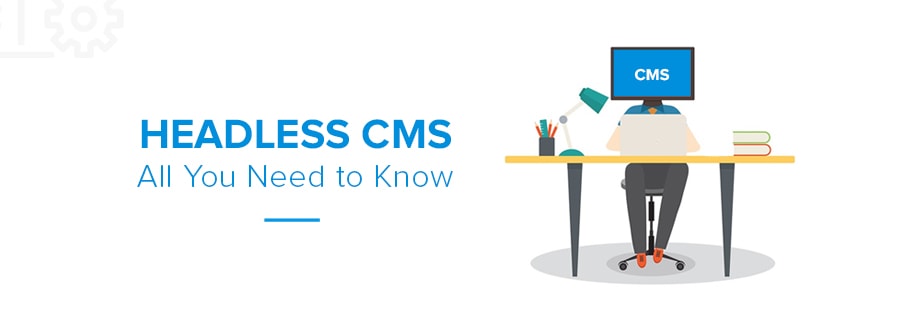Headless CMS: All You Need to Know
Many of us have heard about “Headless CMS” but not everyone understands how it works and the value it offers. Nearly every website is using content management system today to manage content effectively. Unfortunately, traditional CMS doesn’t provide good flexibility while integrating new delivery formats. To avail mobile/IoT functionality & address the challenges, developers prefer using headless.
Let’s unravel the mystery behind the headless CMS and everything we need to know before using it.
Evolution of Headless CMS
The concept arises from the business needs to focus on engaging customers with customized content across various channels. Since the headless CMS doesn’t have the presentation layer, the content is considered “pure” & one instance of it can be used for the display on multiple devices like phones, tablets, websites, etc. The “head” in headless CMS means the frontend, which means it only contains API and backend for storing and managing content.
Top Reasons to Choose Headless
The best thing about using headless CMS is that it gives control over the presentation of content and the power to integrate with any codebase using your preferred language, unlike traditional CMS that needs to follow rules and use specific programming languages.
Here are some of the main reasons why one must choose headless CMS:-
- More Flexible: The headless CMS enables you to put content wherever you want, unlike traditional CMS that binds the content with web pages. As the content can be clearly separated, it can be sent to several channels like mobile, smart TV or AR/VR apps.
- Faster Time to Market: As the headless CMS supports “content-first” approach, the content is naturally separated from the presentation. No matter how different frontends will display their content, users don’t need to worry as all the updates are done across all channels, thereby speeding up production.
- No installs/upgrades: Since the headless CMS runs completely in the cloud as Software as a Service (SaaS), there is no headache for installs, upgrades to run or database servers to set up. The CMS will be maintained by the people that built it, making it effortless for users who need to update or apply hot-fixes.
- Don’t spend on content migration: Whenever we need to update the look and feel of our website or upgrade from current CMS to the new one, we invest a lot in content migration. With headless CMS, the content & its presentation can adapt & evolve without any dependency.
- Extra Security: The last advantage of using headless CMS is that it lowers the risks of DDoS attacks as the content publishing platform cannot be accessed from the database of the CMS. It protects the system against the millions of unknown attacks.
If we need to choose one among a headless CMS or traditional CMS, it is always a good idea to pick the first option as front-end developers can easily select their favorite framework for the presentation layer. Apart from all the benefits discussed above, it can help in managing content with agile process. The new headless CMS from Kentico, also known as Kentico Cloud offers all the great things you need in your content management system. If interested, get in touch with our certified Kentico developers & give your business an opportunity to repurpose content across several channels.
